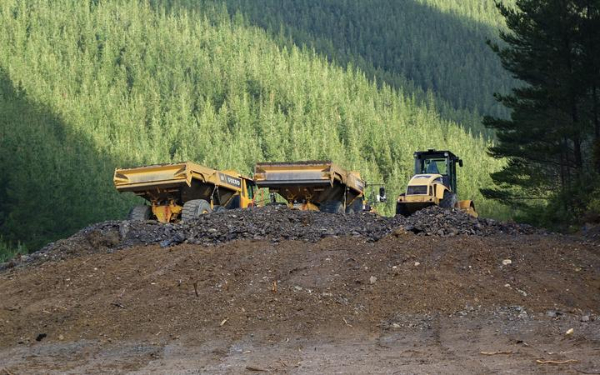The Tasman District mayor is vowing to press on with a large irrigation project, despite a 25 percent jump in its cost.

When finished in 2022, the Waimea Dam will be 53 metres high and hold 13 billion litres of water - that's more than the contents of 5000 Olympic swimming pools.
Mayor Tim King said the dam was vital to provide water to a parched farming region west of Nelson currently enduring yet another drought.
It would contribute to town water supplies but would mainly provide irrigation to rich orchard and market garden land outside Richmond.
Construction of the dam was approved in 2018 after almost two decades of bureaucratic argument and protests by some environmentalists and citizen groups.
It was seen as a victory by the irrigation industry that had suffered a big defeat in Hawke's Bay and was further thwarted by a crackdown just after the current government was elected.
The cost of the Waimea project was projected to be $104.4 million.
The majority of this would be split roughly equally from local farmers and the Tasman District Council, either as equity or loans.
But late last week, the company building the dam announced that the cost would jump by $25m, due to what it called "unforeseen geological conditions".
"The projected new cost is $129.4 million and there is now a two to four-month delay, largely attributable to problems identified with the rock-fill during testing," the company said in a statement.
The problem was that rock near the site was found to be fractured and prone to breaking up and so was unsuitable for use in a key part of the dam.
Alternative rock would have to be found, and this raised the prospect of streams of trucks carrying rock quarried elsewhere up the road to the dam site.
This would account for most of the extra $25m.
The company's chief executive, Mike Scott, said "as always we are looking for opportunities to review components of the dam's design to save on costs wherever we can.
"But this must be done without compromising the safety, efficiency or reliability of this significant infrastructure project."
Most of the extra cost will be borne by Tasman District Council, minus $3m payable by farmers.
King said he was hugely disappointed but the work had to go on.
"We are in the position now, given the stage of the project, where pressing on is pretty much the only option," he said.
"We, like much of the country, are facing the considerable and continuous issues of water availability.
"Last year was an extreme drought, this year is also very dry, so investing in this infrastructure is crucially important."
King added the water problem was bad now only because of neglect in earlier decades.
"Right around the country, long term under investment in infrastructure is coming home to bite.
"We made a decision to invest in long term water security for a significant part of this region and I am still committed to getting that project completed."
A group that fought against the dam, the Water Information Network, planned to meet to discuss the matter.
A leader of the group, Murray Dawson, said he would recommend that the group call for an official inquiry into the dam project.
He added international research showed the cost of building dams invariably increases, usually for geological reasons, and this increase could often double the original price tag.



 Peter Dunne: Luxon Gets Out His Butcher's Knife - Briefly
Peter Dunne: Luxon Gets Out His Butcher's Knife - Briefly Binoy Kampmark: Warring Against Encryption, Australia Is Coming For Your Communications
Binoy Kampmark: Warring Against Encryption, Australia Is Coming For Your Communications Gordon Campbell: On Fast Track Powers, Media Woes And The Tiktok Ban
Gordon Campbell: On Fast Track Powers, Media Woes And The Tiktok Ban Binoy Kampmark: Censorship Wars, Elon Musk, Safety Commissioners And Violent Content
Binoy Kampmark: Censorship Wars, Elon Musk, Safety Commissioners And Violent Content Gordon Campbell: On The Public Sector Carnage, And Misogyny As Terrorism
Gordon Campbell: On The Public Sector Carnage, And Misogyny As Terrorism Ramzy Baroud: NATO’s Never-ending War: The 75-Year-Old Bully Is Faltering
Ramzy Baroud: NATO’s Never-ending War: The 75-Year-Old Bully Is Faltering